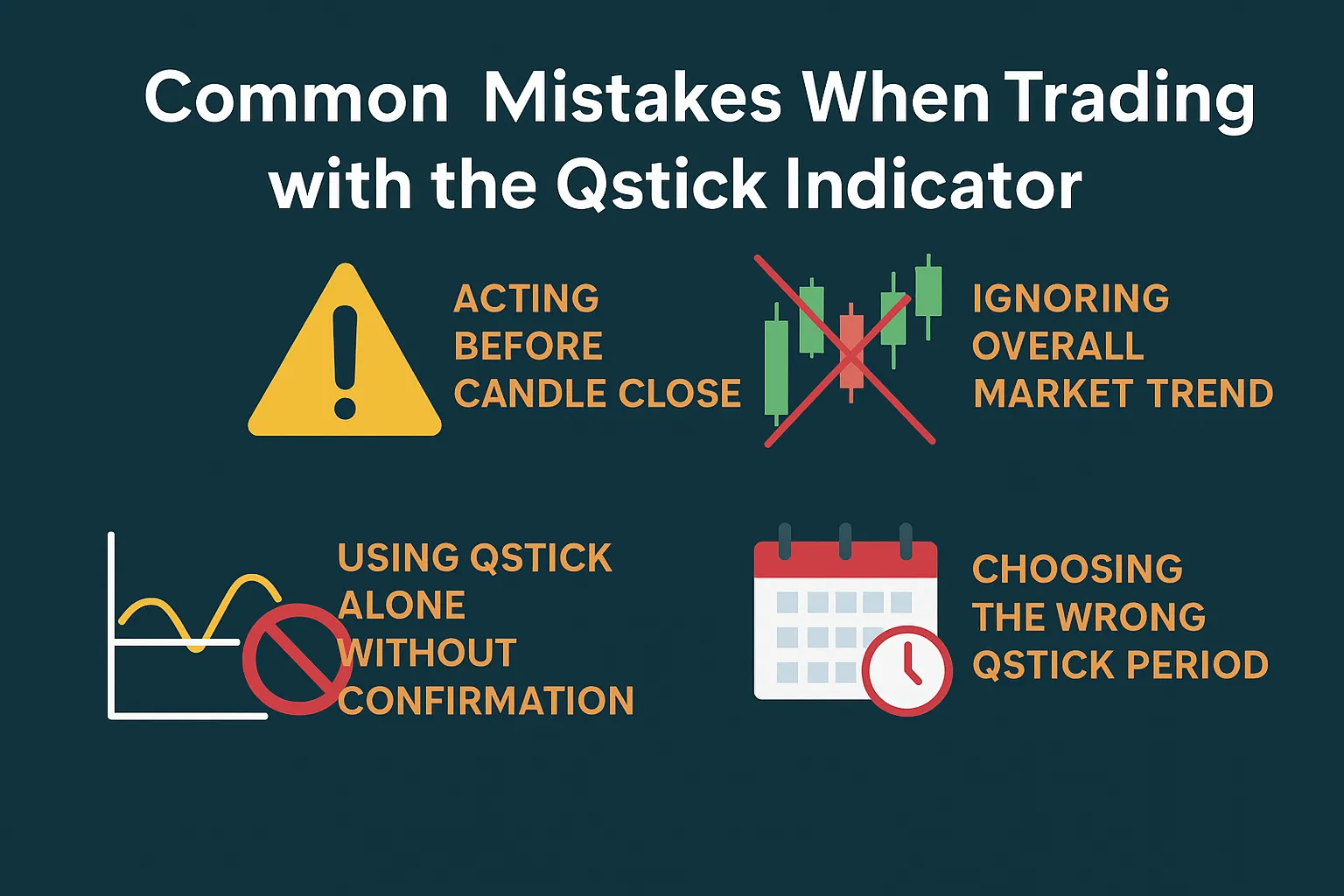The Qstick Indicator is a simple yet powerful tool that helps traders analyze market sentiment by measuring candlestick body strength. But like any indicator, its value depends on how it’s used.
In this post, we’ll break down the most common Qstick Indicator trading mistakes and how you can avoid them to improve your trading results.
1. Acting Before Candle Close
❌ Mistake: Entering trades the moment the Qstick line touches or crosses the zero line — before the candle closes.
✅ Fix: Always wait for the candle to fully close before confirming the Qstick signal. Incomplete signals can reverse by candle close and give you false entries.
2. Ignoring the Overall Market Trend
❌ Mistake: Taking every Qstick zero-line crossover as a trade signal, without considering trend direction.
✅ Fix: Use moving averages or a trend filter (like 50-SMA or trendlines) to determine the dominant trend. Only take Qstick buy signals in uptrends and sell signals in downtrends.
3. Using Qstick Alone Without Confirmation
❌ Mistake: Relying on Qstick in isolation without confirming with other indicators like RSI, MACD, or volume.
✅ Fix: Combine Qstick with momentum tools (RSI), trend-followers (MACD), or volume indicators to validate trade signals and reduce false positives.
4. Using Inappropriate Timeframes
❌ Mistake: Applying Qstick to timeframes that are too low (1-min or 3-min), where price action is too noisy.
✅ Fix: Use the Qstick Indicator on higher timeframes like 15-min, 1-hour, 4-hour, or daily for clearer, more reliable signals.
5. Choosing the Wrong Qstick Period
❌ Mistake: Using default periods blindly without adjusting for your trading style.
✅ Fix:
- Use 8–14 period EMA Qstick for faster signals in intraday trading.
- Use 20–30 period SMA Qstick for smoother trend-following setups in swing trading.
6. Overtrading Every Signal
❌ Mistake: Trading every crossover or signal without discretion, leading to poor trade quality.
✅ Fix: Be selective. Only trade when Qstick aligns with:
- Trend direction
- Key support/resistance zones
- High-volume confirmation
7. Ignoring Divergences
❌ Mistake: Missing early warning signs of reversals when Qstick diverges from price action.
✅ Fix: Watch for bullish divergence (Qstick rising while price falls) and bearish divergence (Qstick falling while price rises) to catch potential trend reversals early.
8. No Stop-Loss or Exit Strategy
❌ Mistake: Trusting the Qstick blindly without managing risk.
✅ Fix: Always use stop-losses, and define exit rules:
- Exit when Qstick crosses back to the opposite zone
- Use trailing stops once trade is in profit
FAQs
1. Can I trade using the Qstick Indicator alone?
You can, but it’s best used in combination with other indicators for confirmation.
2. Is the Qstick good for scalping?
It can work on short timeframes, but be cautious — it’s more reliable on higher timeframes.
3. What’s the most reliable Qstick signal?
A confirmed zero-line crossover in the direction of the dominant trend, ideally backed by volume or MACD.
4. What causes Qstick signals to fail?
False signals often occur in sideways markets, low-volume environments, or when used without confirmation tools.
5. Is Qstick better with EMA or SMA?
EMA gives quicker signals for short-term trades, while SMA smooths out longer-term trends better.













